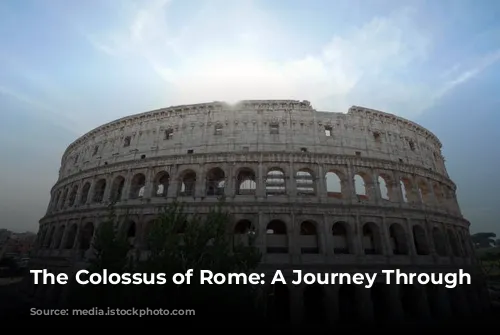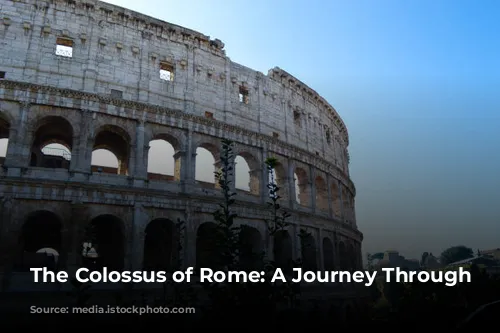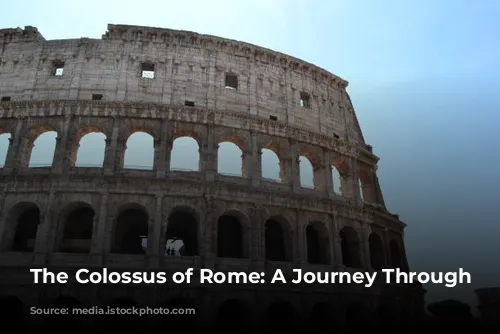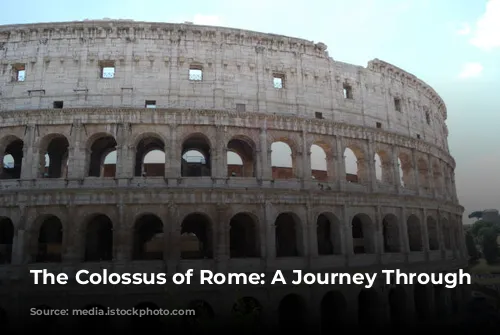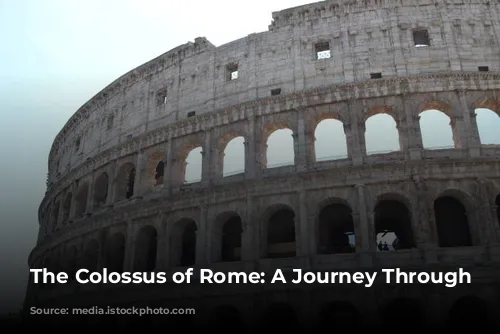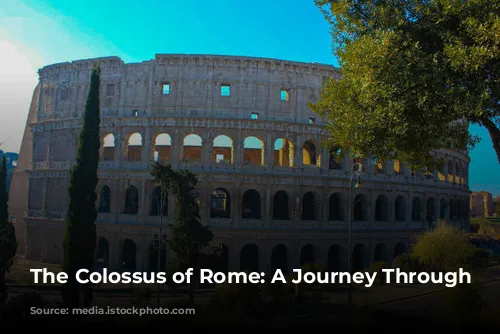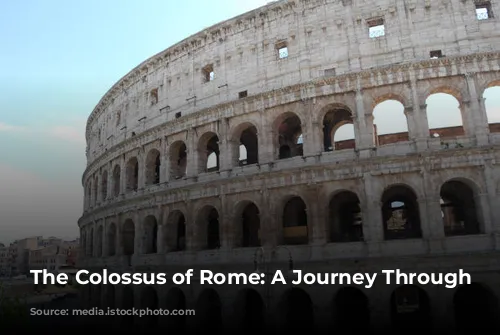The Colosseum, known as the “Flavian Amphitheatre” in its time, stands tall as a testament to the grandeur of the Roman Empire. This monument, a symbol of Roman power and ingenuity, was born from the vision of Emperor Vespasian, who envisioned a massive spectacle to entertain the masses. His son, Titus, brought this vision to life in 80 A.D., marking the Colosseum’s grand opening with a 100-day extravaganza.
A Century of Spectacle: From Sea Battles to Gladiatorial Combat
The opening ceremony was a breathtaking display of wealth and power, showcasing elaborate fights, shows, and hunts involving the slaughter of thousands of animals. The arena even transformed into a vast lake for thrilling naumachia, reenactments of epic sea battles. The spectacle was nothing short of incredible, leaving the Roman populace in awe.
Why the Colosseum?
The name “Colosseum” is a curious one, appearing first in a prophecy by the Venerable Beda, a medieval monk. His prediction, “Rome will exist as long as the Colosseum does; when the Colosseum falls so will Rome; when Rome falls so will the world,” hints at the monument’s enduring importance. The name likely stemmed from the massive statue of Emperor Nero, known as “the Colossus,” which once stood near the amphitheatre.
A Marvel of Roman Engineering
Imagine the Colosseum in its full glory, gleaming white with travertine stone slabs, a testament to Roman mastery of architecture. This elliptical structure was designed to accommodate a vast audience, and its four floors were a testament to Roman engineering prowess.
The Colosseum’s construction, completed in just ten years, was a marvel of its time. This incredible feat was achieved through the Romans’ ingenious use of the arch, a structural element that allowed them to distribute the weight of heavy structures effectively. The Colosseum stands as a testament to their architectural prowess, reminiscent of their famous aqueducts.
The Colosseum’s Transformation
The Colosseum we see today is a mere shadow of its former self, with much of its original grandeur lost to the ravages of time. The brick wall that once enclosed the arena is now missing, a victim of its use as a quarry during the Middle Ages. The marble, lead, and iron from the Colosseum were plundered to build other structures, including the Barberini Palace, the Piazza Venezia, and even St. Peter’s Basilica.
Despite this destruction, the Colosseum still stands tall, a testament to its past glory. The holes in its columns serve as a poignant reminder of the materials that were once used to build this magnificent structure.
Seating Arrangements and the “Velarium”
The Colosseum could accommodate up to 70,000 spectators, all with a clear view of the action thanks to the inclined seating tiers. This was no ordinary stadium, however, as the seating reflected the social hierarchy of Roman society.
The commoners were assigned seats in the upper tiers, while the elite enjoyed closer views near the arena. The senators, vestals, priests, and the emperor held the most prestigious seats in the front row.
The Colosseum even boasted a sophisticated roof system, known as the “Velarium,” which offered protection from the sun. This enormous linen tarpaulin was hung by a network of ropes, winches, and wooden poles. It required the skill of 100 sailors from the Imperial fleet to move it, demonstrating the sheer scale and complexity of this ingenious system.
The Colosseum’s Stage: A Glimpse into the Arena’s Secrets
The Colosseum’s arena floor, once a combination of brick and wood, has vanished over time. However, the underground cellars remain, providing a window into the preparations for the Colosseum’s spectacles.
These cellars housed lifts and hoists with counterweights, remnants of which can still be seen today. These intricate mechanisms were used to bring animals and gladiators into the arena through trapdoors, creating dramatic entrances that wowed the audience.
The Colosseum: A Stage for Symbolic Spectacles
The Colosseum was more than just an arena for entertainment; it was a symbol of Roman power and a tool for political control. The spectacles held within its walls were carefully crafted to reinforce the authority of the emperor and unite the populace.
These events served as a form of public theatre, providing the people with a much-needed escape from the everyday struggles of life. They also offered a powerful reminder of the emperor’s power and the consequences of defying his authority.
The Spectacles of the Colosseum: From Exotic Animals to Gladiatorial Combat
The Colosseum played host to a diverse array of spectacles, each with its own distinct character and appeal. The “Venationes”, animal hunts involving both exotic beasts and gladiators, were a popular attraction.
The arena also witnessed executions, where condemned individuals faced the wrath of wild animals. The “Silvae”, elaborately staged forest scenes, offered a more theatrical experience, showcasing the skills of painters and set designers.
While the Colosseum is often associated with gladiatorial combat, the gladiators were not the only attraction. Other spectacles included elephant performances, showcasing the intelligence and agility of these magnificent creatures.
The Gladiators: Heroes of the Arena
The gladiators were the true stars of the Colosseum. These skilled fighters, often prisoners of war or paupers seeking fame and fortune, captivated the Roman populace. They were treated like heroes, with fans cheering them on and women vying for their attention.
The Colosseum was home to a diverse array of gladiators, each with their own unique weapons and fighting styles. The “Retiarius” relied on a net, trident, and knife, while others fought with shield and sickle or donned heavy armor and wielded spears.
The duels were carefully orchestrated to create dramatic confrontations, keeping the audience on the edge of their seats. The fate of the defeated gladiator rested in the hands of the emperor, whose thumbs up or down determined whether the fighter lived or died.
The winners were showered with wealth and glory, a testament to their skill and bravery. The Colosseum’s bloody spectacles, though brutal by today’s standards, were a source of fascination and entertainment for the Romans, reflecting their appetite for thrilling and violent entertainment.
The Colosseum’s Legacy: From Spectacle to Symbol of Christian Martyrdom
The decline of the Roman Empire brought an end to the Colosseum’s glory days. The once-mighty arena fell into disuse, becoming a home for hermits, hospitals, and even a cemetery.
During the Middle Ages, the Colosseum was repurposed as a quarry, its materials plundered to build new structures. The cross placed on a pedestal by Pope Benedict XIV transformed the Colosseum from a symbol of Roman power to a place of Christian pilgrimage.
The Colosseum, once a symbol of Roman brutality, now stands as a poignant reminder of Christian suffering. The Stations of the Cross begin at the foot of this cross, commemorating the journey of Christ to his crucifixion.
Today, the Colosseum continues to stand as a monument to Rome’s ancient glory, a powerful reminder of a civilization that once ruled the world. For tourists visiting Rome, it is a must-see, a glimpse into the past that transcends time and culture.
